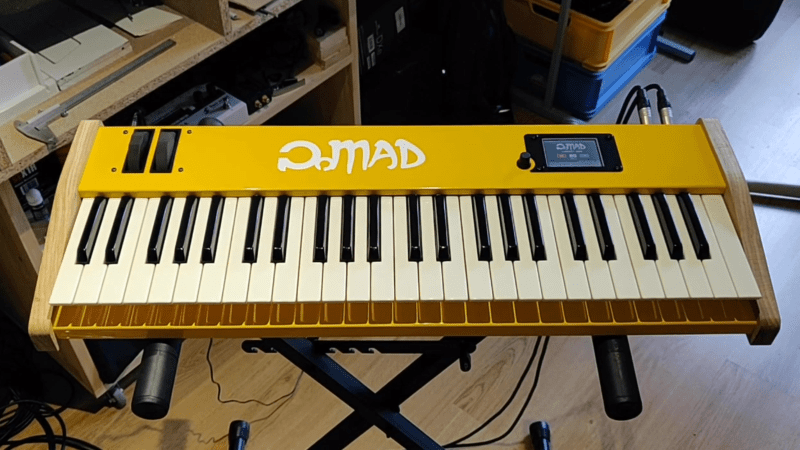The one thing you might be surprised not to find in [Laurent]’s beautiful tonewheel organ build is any tonewheels at all.
Tonewheels were an early way to produce electronic organ sounds: by spinning a toothed wheel at different frequencies and transcending the signal one way or another it was possible to synthesize quite an array of sounds. We like to imagine that they’re all still there in [Laruent]’s organ, albeit very tiny, but the truth is that they’re being synthesized entirely on an STM32 micro controller.
The build itself is beautiful and extremely professional looking. We were unaware that it was possible to buy keybeds for a custom synthesizer, but a model from FATAR sits at the center of the show. There’s a MIDI encoder board and a Nucleo development board inside, tied together with a custom PCB. The UI is an momentary encoder wheel and a display from Mikroelektronika.
You can see and hear this beautiful instrument in the video after the break.















Beautifully done–the Leslie is especially cool.
Pretty sweet build. The GUI impressed me most to be honest, as it is often not done that well for embedded projects.
Hey! Thank you Gerrit for the sweet post.
Thanks for taking the time to write about your build! It’s really cool!
Beautifully done, hardware, user interface, firmware, the whole package. Having a nice keyboard is a plus, too.
The Synclavier was a ground breaking device when it was invented in 1977. Those who do things for the first time deserve the credit. Today it’s not hard to build a Synclavier knock-off using cheap off-the-shelf parts because someone did it first more than 40 years ago.
Beautiful execution… I guess this could use some presets